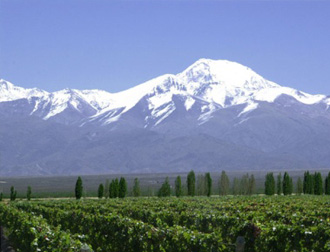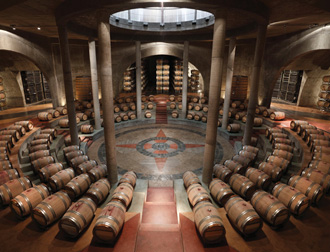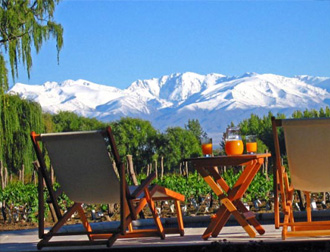View Sample Itineraries
for Independent Travel:
Argentina Arts & Epicurean
Includes Buenos Aires and Mendoza Wine Country
View All Sample Itineraries
Mendoza province, Argentinaís vast, world-class wine region, is simply spectacular. A Mendoza wine tour is, of course, an essential element of a personalized Argentina travel program. The region borders Chile and is set against a backdrop of the majestic, omnipresent and eternally-snowcapped Andes range. While Mendoza City features more trees than people, so locals say, the surrounding countryside is quite arid and lunar-like in some respects. The region enjoys more than 300 days of sunshine each year, and annual rainfall is far less than that of any other world wine capital. Dirt roads, off-the-beaten-path adventures, sunsets over the Andes and the charm of low slung Adobe buildings in the countryside await the visitor. And, of course, there is world-class wine!

A Jesuit priest is often credited with planting the first grapevines in Argentina when he crossed over from Chile in the 1550s. But it was French agriculturist Aime Pouget who introduced to Argentina the first modern varietals around 1850. By then, Mendoza and San Juan provinces were already the seat of Argentine wine country. In the 19th and early 20th centuries, new immigrants from Spain, Italy and France sought out fine wine. Immigrants also brought with them new vines and modern viticultural methods. Cabernet Sauvignon, Malbec and the Italian varietal Barbera began to flourish in the shadow of the Andes as old colonial practices gave way to new approaches at the turn of the 20th century. While Argentina previously was widely considered the sleeping giant of the wine world, the country now has awakened to its full potential, and new wineries like Achaval-Ferrer are producing great wines that are receiving superb ratings from leading critics around the world.

As wine enthusiasts are well aware, Malbec, one of the original Bordeaux blending grapes, reaches its full potential in Mendoza. A continental climate and long growing seasons, an abundance of sun, low humidity, rocky soil and minimal rain provide not just Malbecs, but also Syrahs and Cabernet Sauvignons, with their characteristic high concentration, intense color, velvety soft tannins, fruitiness and food-friendly low acidity. Unlike many European wines, Argentine red wines can be enjoyed young (although many will benefit from aging). This massive wine-growing region, which includes more than 1,200 wineries, is also home to white varietals such as Chardonnay, Semillon, Sauvignon Blanc and the indigenous Torrontes. Thanks to the size of the region and its diverse microclimates, both warm and cool weather varietals thrive here. Many wine lovers travel to the region during March to participate in the Vendimia Festival, a week-long celebration of the grape harvest that is marked with concerts and a series of bodega-sponsored activities. The climate here is mild in the winter and while summers are warm, the region is quite dry as the Andes range blocks moisture from the Pacific. April and May also are good times to visit for Mendoza wine tours and other harvest-related activities.

As its winemaking reputation has grown, thanks to the appeal of its outstanding Malbecs, the inevitable slew of hotels, upscale restaurants and architecturally-striking wineries recently has opened to serve a growing number of tourists. The modern winery architecture, akin to the trend in Spainís La Rioja region, is a great contrast to the rugged terrain. In so many respects, Mendoza is a destination that is inventing itself. As Mendoza is in its infancy as a destination for upscale travelers, now is an excellent time to experience this world wine capital. We look forward to an opportunity to handcraft a Mendoza wine tour and other program elements as part of a memorable Argentina travel program.
Please contact us so that we may begin the process of handcrafting an exceptional Argentina travel experience including a Mendoza wine tour for you and your group of two or more.


